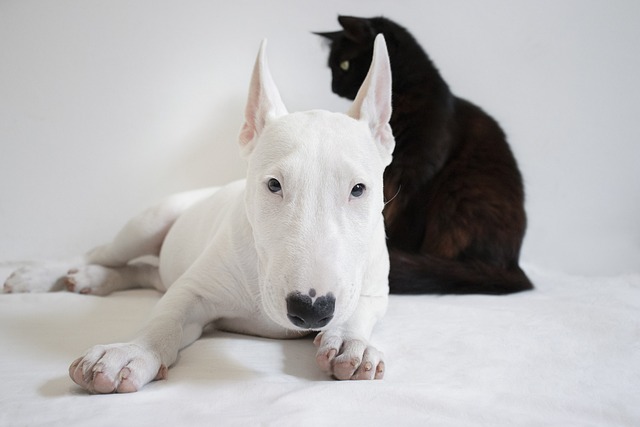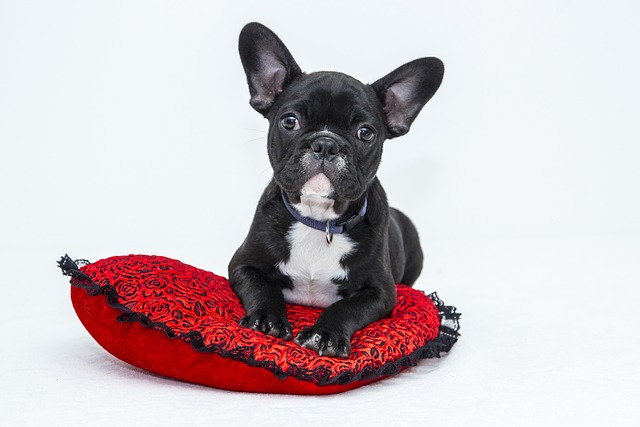
How do dogs get infected with ear mites
If you’ve ever watched your dog paw at their ear like it’s on fire, then noticed dark, crumbly gunk—like coffee grounds—when you peek inside, you’re probably dealing with ear mites.
Watching your pup cower at the sound of a doorbell or freeze when a stranger passes can feel heart-wrenching. Many new dog owners in suburban neighborhoods notice this fear—whether it’s a rescue dog shrinking from sudden movements or a puppy trembling during their first trip to the park. These reactions aren’t stubbornness; they’re the brain’s natural "fight-or-flight" response kicking in, often rooted in lack of exposure or past negative experiences.
The key to building confidence lies in desensitization, a behavior science technique that gently exposes dogs to their fears in manageable doses. For example, if your dog panics at loud noises, start by playing a recording of a door slam at a volume so low they barely notice it. Pair each play with a tiny piece of cheese or their favorite treat—something high-value like freeze-dried chicken works wonders. Over days, gradually increase the volume while keeping the treats consistent. This teaches their brain to associate the once-scary sound with good things, rewiring their reaction from fear to curiosity.
Practical outings can turn into confidence boosters with careful planning. Take short walks in quiet parts of the neighborhood during off-peak hours—early mornings before kids head to school, for instance. Let them set the pace; if they stop to sniff a bush, let them linger. When a jogger approaches, step slightly in front of your dog to block their line of sight and toss a treat on the ground. This creates a "safe zone" where they learn you’ll handle big, moving things while they get rewards for staying calm. A friend in Portland swears by this method: her shy terrier mix now wags his tail when cyclists pass, thanks to six weeks of 10-minute daily walks with these small adjustments.
 Socialization matters, but it must be pressure-free. Instead of forcing interactions at the dog park, arrange a "meet and greet" with a calm, older dog you know—like your neighbor’s golden retriever who’s great with puppies. Keep both on leashes, stand 10 feet apart, and let them observe each other while munching treats. If your dog shows signs of stress—panting, lip-licking, or tucking their tail—step back. Rushing this process can make fear worse, which is why patience beats pushing every time.
Socialization matters, but it must be pressure-free. Instead of forcing interactions at the dog park, arrange a "meet and greet" with a calm, older dog you know—like your neighbor’s golden retriever who’s great with puppies. Keep both on leashes, stand 10 feet apart, and let them observe each other while munching treats. If your dog shows signs of stress—panting, lip-licking, or tucking their tail—step back. Rushing this process can make fear worse, which is why patience beats pushing every time.
In the U.S., responsible confidence-building goes hand in hand with local laws. Always carry waste bags during walks—cities like Chicago and Austin have strict fines for uncollected poop, and it’s common courtesy too. Ensure your dog is up-to-date on core vaccines like rabies, not just for legal compliance in most states but because healthy dogs are more likely to feel secure. Remember: never use punishment like yelling or leash yanking. Not only is it banned in positive training circles across Europe and North America, but it also breaks trust, making fear deeper.
Small daily wins add up. That first time your dog voluntary approaches a new person or walks past a noisy trash can without freezing? Celebrate those moments as loudly as you’d cheer for a winning home run. In apartment buildings, where sounds travel easily, practice these steps in hallways during quiet times—knock softly on your own door, reward, then have a neighbor knock gently. Over time, these consistent, kind interactions turn fear into familiarity, and familiarity into confidence. Your pup’s brave new world starts with those tiny, treat-filled steps.

If you’ve ever watched your dog paw at their ear like it’s on fire, then noticed dark, crumbly gunk—like coffee grounds—when you peek inside, you’re probably dealing with ear mites.

If you’ve ever watched your poodle squint through a Miami afternoon, paws darting to rub at their eyes after a romp in the grass, you’ve probably thought

If you’ve ever noticed your dog’s paws or nose turning thick, crusty, and rough—like they’re covered in dried clay—and wondered, “Could tiny bugs be causing this?”

That heart-sinking moment when your golden retriever hesitates before jumping onto your Seattle apartment’s hardwood floor, licking at cracked, sandpaper-rough paw pads?

Once-obedient puppy suddenly ignoring commands, darting after squirrels mid-walk, or chewing the couch instead of their toy—many owners wonder if they’re doing something wrong.

If you’ve ever found yourself holding a bottle of eye drops, staring at your pup’s red, watery eye, and wondering, “Can I just put this in?” you’re not alone.